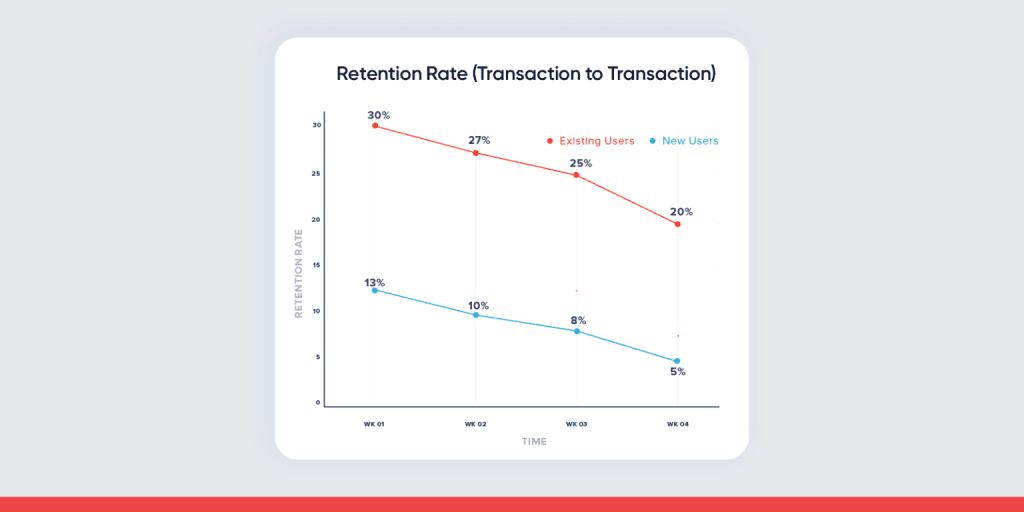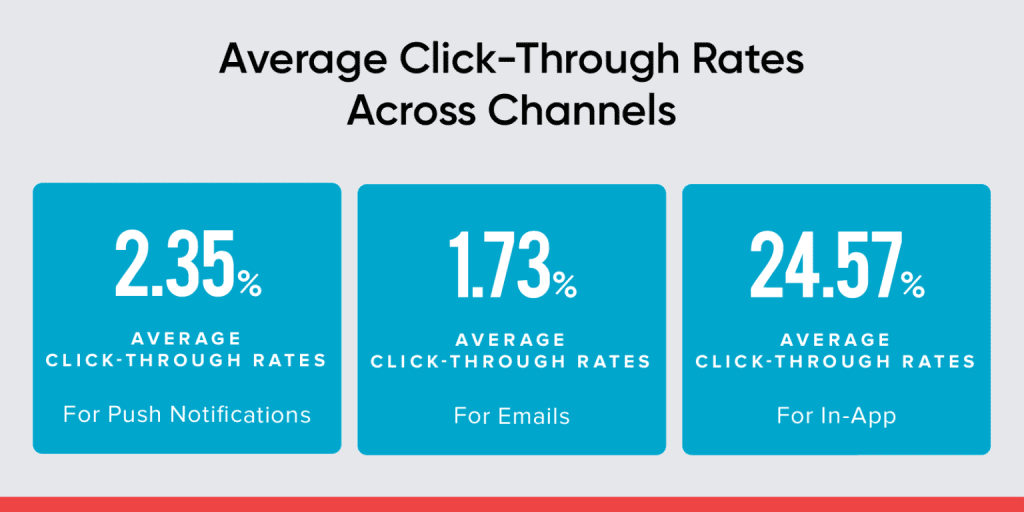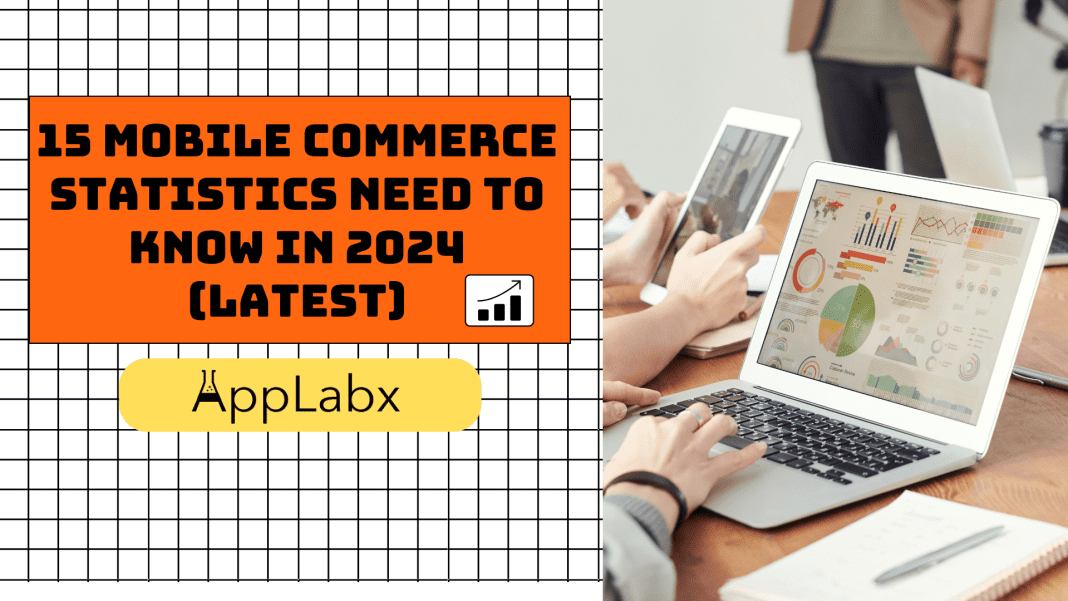Key Takeaways
- Global Mobile Sales Surge: Discover how mobile commerce is reshaping the retail landscape, with a deep dive into statistics showcasing a significant surge in global mobile sales, providing valuable insights for businesses seeking to tap into this growing market.
- Insightful Consumer Data: Explore the impact of user behaviors in mobile commerce marketing decisions in 2024.
- Strategic Insights for 2024: Stay ahead of the curve with our latest blog, offering a comprehensive overview of the key mobile commerce statistics for 2024. Gain strategic insights into emerging trends, consumer behaviors, and technological advancements shaping the digital commerce landscape.
In the ever-evolving landscape of e-commerce, the pulse of technological advancements beats strongest in the realm of mobile commerce. As we stand at the threshold of 2024, the significance of mobile devices in shaping the future of online business cannot be overstated.
The Mobile Commerce Landscape
The fusion of cutting-edge technologies, shifting consumer behaviors, and a global digital transformation has given rise to a dynamic ecosystem where mobile commerce reigns supreme.
To stay ahead in this fast-paced digital race, businesses and marketers must be armed with the latest insights and trends that govern the mobile commerce landscape.

In this comprehensive exploration, we delve deep into the heart of the matter, unveiling 15 crucial mobile commerce statistics that will shape the narrative in 2024.
What will be covered?
Embark on this journey with us as we uncover the intricate details behind these statistics, providing a roadmap for businesses and marketers to navigate the complex terrain of mobile commerce in 2024.
Our exploration promises to equip you with the knowledge essential for staying relevant but ahead in the mobile commerce revolution of the upcoming year.
Get ready to decode the numbers, anticipate the trends, and elevate your mobile commerce strategy to unprecedented heights.
The future is mobile – are you ready for it?
Before we venture further, we like to share who we are and our digital experiences.
About AppLabx
From developing a solid marketing plan to creating compelling content, optimizing for search engines, leveraging social media, and utilizing paid advertising, AppLabx offers a comprehensive suite of digital marketing services designed to drive growth and profitability for your business.
AppLabx is well known for helping companies and startups use mobile commerce marketing to drive web traffic to their websites and web apps.
At AppLabx, we understand that no two businesses are alike. That’s why we take a personalized approach to every project, working closely with our clients to understand their unique needs and goals, and developing customized strategies to help them achieve success.
If you need a digital consultation, then send in an inquiry here.
15 Mobile Commerce Statistics Need to Know in 2024 (Latest)
- The global mobile commerce market size is expected to reach US$ 5,867.1 billion by 2028
- By 2025, retail mobile commerce sales in the United States are forecasted to grow by approximately US$ 710 billion
- As of January 2022, mobile commerce accounted for nearly two-thirds of all global e-commerce retail sales
- As of July 2023, 88% of Gen Z users used the Apple App Store
- As of July 2023, Taobao led the shopping apps in China with nearly 589.33 million monthly active users
- Mobile commerce was the most popular among U.S. shoppers ages 30 to 49
- In 2022, Shopee was the most downloaded free shopping application in Indonesia, Vietnam, the Philippines, and Malaysia
- Mobile phones generate most of the digital commerce website visits
- Mobile wallets accounted for roughly half of global e-commerce payment transactions
- Mexico stood out with the highest proportion of Gen Z mobile e-commerce shoppers
- 58% of respondents state that when they are on a mobile device, they are “looking for something specific but browsing around”
- 67% of respondents cited that “pages and links being too small to click on” was an impediment to mobile shopping
- 76% of respondents shop on mobile devices because “it saves them time”
- 80% of e-commerce app users churn within 4 weeks of downloading the app
- In-app notifications see 10x higher engagement than push notifications and emails
1. The Global Mobile Commerce Market Size is Expected to Reach US$ 5,867.1 Billion by 2028
(IMARC)
The burgeoning utilization of wireless handheld devices, distinguished by heightened security, unparalleled convenience, and seamless internet accessibility, has spurred technologically adept consumers to engage in mobile-centric transactions facilitated through digital wallets and online payment gateways. These modalities empower purchasers to execute contactless payments, obviating the need for conventional card swiping and manual data entry, thereby mitigating human errors and streamlining the checkout process. This evolution is significantly propelled by the integration of advanced safety features within mobile and wearable devices, notably the incorporation of biometric authentication mechanisms like fingerprint and facial recognition. Such enhancements not only fortify the security architecture of mobile payments but also contribute to fostering a heightened level of user confidence and trust in the efficacy of these transactions.
2. By 2025, Retail Mobile Commerce Sales in the United States are Forecasted to Grow by approximately US$ 710 Billion
(Statista)

Projected analyses indicate that mobile commerce (m-commerce) sales within the United States surpassed an impressive 360 billion U.S. dollars in the year 2021. Forecasts for the year 2025 unveil a trajectory poised for substantial growth, nearly doubling the preceding figure to a noteworthy sum of around 710 billion U.S. dollars. This discernible upswing underscores the escalating prominence of m-commerce as a pivotal driver of retail transactions within the U.S. market. In tandem with this surge, the broader e-commerce sector is anticipated to carve out an increasingly substantial share of the overall retail sales landscape in the North American nation over the forthcoming years.
3. Mobile commerce accounted for nearly two-thirds of all global e-commerce retail sales
(Statista)
The intricate tapestry of global e-commerce revealed a pronounced dominance of mobile commerce, constituting an impressive 65.7 per cent of all retail sales within this digital domain. Notably, the Asia Pacific region surpassed this global metric, witnessing a staggering convergence where mobile sales comprised approximately eight-tenths of all digital transactions. A nuanced exploration of the accompanying graphical representation underscores a discernible prevalence of mobile device utilization for online shopping, particularly pronounced in regions situated in the global south. This paradigm shift in consumer behaviour signals a noteworthy evolution in the dynamics of e-commerce, accentuating the centrality of mobile platforms in shaping the contemporary retail landscape on a global scale.
4. As of July 2023, 88% of Gen Z users used the Apple App Store.
(Statista)
Findings from a comprehensive study conducted among iOS users in the United States illuminate a landscape wherein a substantial 88 percent of Generation Z users actively engage with the Apple App Store. The Amazon shopping app emerges as a close second, commanding a notable usage rate of 71 percent within the cohort of Gen Z mobile commerce enthusiasts. This data unveils distinctive patterns in the preferences of this demographic, shedding light on the prevalence of the Apple App Store as a primary gateway for digital interactions, closely followed by the ubiquitous Amazon platform, thereby delineating the digital landscape of Gen Z consumer behaviors in the realm of mobile commerce.
5. As of July 2023, Taobao led the shopping apps in China with nearly 589.33 million monthly active users.
(Statista)
At the forefront of China’s competitive e-commerce landscape stands Taobao, the formidable platform under the Alibaba Group umbrella, boasting a staggering monthly active user base of nearly 589.33 million. Concurrently, Huawei’s proprietary self-operated store, Vmall, has garnered a substantial following, securing approximately 18.34 million active users. This data not only underscores Taobao’s dominant position as the preeminent shopping app in the Chinese market but also highlights the notable traction achieved by Huawei’s Vmall, indicative of its growing significance in the dynamic e-commerce ecosystem. These statistics collectively offer a nuanced perspective on the digital preferences and engagements of users within the intricate tapestry of China’s bustling online retail landscape.
6. Mobile commerce was the most popular among U.S. shoppers ages 30 to 49.
(Statista)
In a comprehensive survey undertaken in July 2022, discerning insights emerged regarding the prevalence of mobile commerce, particularly resonating with U.S. shoppers between the ages of 30 and 49. An overwhelming 92 percent of this demographic attested to their engagement in online transactions using smartphones. Intriguingly, a closely aligned trend was observed among U.S. shoppers aged 18 to 29, with a substantial 87 percent affirming their participation in mobile commerce activities. In stark contrast, the utilization of tablets for e-commerce transactions exhibited a notably lower prevalence, constituting an average of 28 percent among U.S. shoppers. This nuanced data not only underscores the ascendancy of mobile commerce within specific age brackets but also offers a comparative lens, elucidating the varying degrees of digital transactional preferences among distinct segments of the U.S. consumer base.
7. In 2022, Shopee was the most downloaded free shopping application in Indonesia, Vietnam, the Philippines, and Malaysia.
(Statista)
In the landscape of 2022, Shopee emerged as the preeminent free shopping application across Indonesia, Vietnam, the Philippines, and Malaysia, with the Shopee 2.2 app amassing an impressive 48.22 million downloads in Indonesia alone. Meanwhile, in Thailand, Lazada claimed the throne as the most downloaded shopping app, registering over 13.27 million downloads in 2022. A comprehensive examination of consumer behavior in Southeast Asia yielded compelling insights, indicating that over 50 percent of regional consumers opted for online platforms to purchase fashion and personal care items. Notably, nearly half of the respondents leveraged online shopping for acquiring groceries, underscoring the burgeoning significance of e-commerce in the daily lives of consumers. The online grocery market in Southeast Asia has experienced substantial growth in recent years, with projections indicating a monumental surge to 16.6 billion U.S. dollars by the year 2026. This confluence of trends delineates a complex narrative of evolving consumer preferences and the rapid expansion of the digital commerce sphere in the Southeast Asian market.
8. Mobile phones generate most of the digital commerce website visits.
(Statista)
At the forefront of the global digital commerce landscape, mobile phones emerge as the primary catalyst, spearheading both website visits and order placements. Recent data from the first quarter of 2023 unveils a compelling paradigm, with smartphones commanding a staggering 74 percent share of retail site traffic across the globe. Beyond mere website engagement, these handheld devices play a pivotal role in actualizing transactions, facilitating a substantial 63 percent of online shopping orders. This dual dominance of mobile phones in directing online traffic and substantiating purchase transactions underscores the indispensable role they play in shaping the contemporary dynamics of digital commerce on a worldwide scale.
9. Mobile wallets accounted for roughly half of global e-commerce payment transactions.
(Statista)
In the evolving landscape of global e-commerce, the year 2022 witnessed a pivotal shift, with mobile wallets claiming dominance by constituting approximately half of all online payment transactions, establishing themselves as the unequivocal frontrunner in the realm of digital payments on a global scale. This trajectory is poised to ascend further, with expectations forecasting a surge to over 54 percent by the year 2026. Credit cards, while maintaining a noteworthy 20 percent market share in 2021, are projected to witness a decline in the ensuing years. The preference for digital and mobile wallets, while prevalent globally, exhibits nuanced regional variations. Notably, the Asia Pacific Region emerged as a vanguard, with digital and mobile wallets commanding an impressive 60 percent share of e-commerce transactions in 2020. In stark contrast, Latin America’s embrace of this payment method amounted to a more modest 20 percent, underscoring the divergent adoption patterns across different corners of the globe.
10. Mexico stood out with the highest proportion of Gen Z mobile e-commerce shoppers.
(Statista)
Among the scrutinized nations, Mexico emerges prominently with the most substantial proportion of Gen Z mobile e-commerce enthusiasts. As of March 2023, an impressive 72.2 percent of Mexican mobile shoppers fall within the demographic spectrum of young adults aged 18 to 24. This underscores a distinctive trend wherein Latin American countries take the lead in cultivating a robust Gen Z mobile online shopping audience. In stark contrast, the United Kingdom occupies the opposite end of the spectrum, exhibiting the lowest share of mobile shoppers within this age range, constituting a mere 18 percent. These cross-national differentials not only spotlight Mexico’s pivotal role in shaping the digital commerce landscape but also emphasize the divergent adoption patterns of Gen Z mobile shoppers on a global scale.
11. 58% of respondents state that when they are on a mobile device, they are “looking for something specific but browsing around”.
(Dynamic Yield)

A substantial 58% of respondents underscore the nuanced behavior of seeking something specific while concurrently engaging in exploratory browsing when utilizing mobile devices, underscoring the critical need for an exceptional mobile user experience. Recognizing the contextual nuances of the purchase funnel within which mobile users navigate becomes paramount for delivering sessions that resonate more profoundly. Given the propensity of mobile buyers to compare various similar websites, the optimization of mobile web experiences gains heightened importance in facilitating product discoverability. By aligning mobile websites with the intricacies of the buyer journey, businesses can strategically position themselves to meet the dynamic needs of users engaged in comparative exploration, enhancing their overall digital experience.
12. 67% of respondents cited that “pages and links being too small to click on” was an impediment to mobile shopping.
(Dynamic Yield)

With the ascendancy of mobile devices, the predominant approach among e-commerce websites involved adapting desktop interfaces for smartphones through responsive design—a pragmatic strategy that conserved development resources. However, this approach has given rise to lackluster mobile sessions, often characterized by the recurring challenge of the “fat fingers” issue, where pages and links become excessively small for users to interact with effectively. In acknowledging this limitation, retailers are urged to shift towards a mobile-first design paradigm, prioritizing the creation of smoother navigational structures and fortified, secure checkout processes. While the ubiquity of friend-generated selfies remains beyond control, adopting a proactive stance on mobile-first design represents a tangible avenue for retailers to cultivate superior and more user-centric experiences.
13. 76% of respondents shop on mobile devices because “it saves them time.”
(Dynamic Yield)

The inclination toward mobile device shopping is prevalent among 76% of respondents, primarily motivated by the desire to optimize time efficiency. Strikingly, only 12% of those surveyed find shopping on the mobile web to be convenient, indicating a notable disparity between consumer expectations and the current state of mobile web experiences. The paradox emerges as consumers leverage smartphones with the explicit goal of time-saving in their shopping endeavors, yet the medium falls short in delivering the convenience users seek. This discrepancy underscores a critical gap in aligning mobile web platforms with user preferences, emphasizing the pressing need for businesses to reassess and enhance their mobile web interfaces. Bridging this divide holds the key to providing users with a more gratifying and efficacious shopping experience that aligns more closely with their expectations.
14. 80% of e-commerce app users churn within 4 weeks of downloading the app.
(CleverTap)

A pervasive challenge in the e-commerce app landscape is the notable observation that, on average, 80% of users exhibit churn within a scant four weeks of app download. This elevated churn rate, compounded by the accompanying high costs associated with customer acquisition, presents a formidable barrier to continually expanding user bases and fostering top-line growth. The dilemma deepens as e-commerce apps grapple with the imperative of customer retention; the consequence is a recurrent cycle of investing in resource-intensive acquisition campaigns to attract users, only to witness their fleeting engagement. Noteworthy data reveals that the repeat purchase rate among existing users surpasses that of new users by a factor of 5. This underscores a pivotal truth: existing users demonstrate a significantly higher likelihood of brand loyalty and sustained transactional engagement compared to their newly acquired counterparts. This substantiates the strategic importance of fostering long-term customer relationships, as the prolonged tenure of a customer correlates directly with their heightened value to the business.
15. In-app notifications see 10x higher engagement than push notifications and emails.
(CleverTap)

In the realm of user engagement, in-app notifications stand out, boasting a remarkable 10 times higher engagement compared to push notifications and emails. To captivate users effectively, it is imperative to deploy tailored content through in-app notifications. This can encompass personalized recommendations, alerts highlighting exclusive product launches or designer releases, special discounts, reward points incentives, and even milestone celebrations such as birthdays and anniversaries. The nuanced personalization of in-app notification content emerges as a strategic imperative, serving as a potent tool for expediting product discovery, augmenting average order values, and ultimately cultivating enduring customer loyalty. The customization of content within in-app notifications proves to be a pivotal facet in enhancing the overall user experience and fortifying the brand-customer relationship.
Conclusion
In conclusion, the landscape of mobile commerce in 2024 is both dynamic and transformative, underscored by a wealth of statistics that shed light on the evolving preferences, behaviors, and trends shaping the industry.
As we navigate this digital frontier, it becomes evident that mobile commerce is not merely a trend but a seismic shift in consumer behavior, influencing every facet of the online shopping experience.
In this rapidly evolving landscape, the insights derived from these 15 mobile commerce statistics provide a compass for businesses to navigate the complexities and capitalize on the opportunities of the mobile commerce revolution in 2024.
By understanding these trends, embracing emerging technologies, and adopting user-centric strategies, businesses can position themselves not just to survive but to thrive in the mobile-first era, setting the stage for a transformative and prosperous future in the world of digital commerce.
If you are looking for a top-class digital marketer, then book a free consultation slot here.
If you find this article useful, why not share it with your friends and business partners, and also leave a nice comment below?
We, at the AppLabx Research Team, strive to bring the latest and most meaningful data, guides, and statistics to your doorstep.
To get access to top-quality guides, click over to the AppLabx Blog.
People also ask
What are the trends for e-commerce in 2024?
In 2024, e-commerce trends forecast a surge in AI-driven personalization, AR-enhanced shopping experiences, sustainability-driven practices, accelerated adoption of voice commerce, and the continuous rise of mobile commerce. Stay ahead with these evolving trends shaping the future of online retail.
What are the pros and cons of mobile commerce?
Pros of mobile commerce: Enhanced convenience, increased accessibility, personalized experiences. Cons: Security concerns, limited screen size for complex transactions, dependency on internet connectivity. Balancing these factors is crucial for optimizing the mobile commerce experience.
How does mobile commerce enhance efficiency?
Mobile commerce enhances efficiency by providing on-the-go access, streamlining transactions with mobile wallets, and leveraging push notifications for instant updates. With responsive designs and personalized experiences, users can swiftly navigate, promoting a seamless and time-saving shopping process.
Source:

































